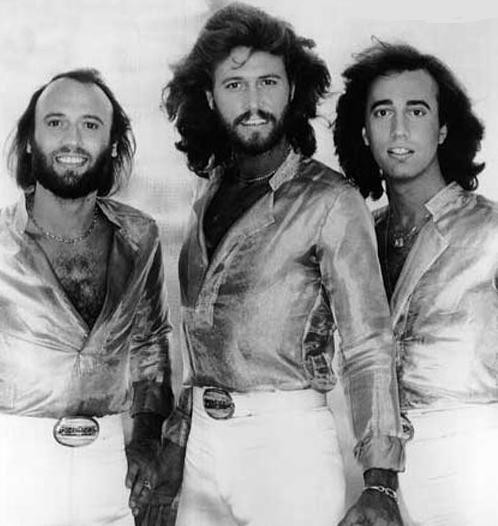 When three young brothers from the Isle of Man started singing together, no one imagined they would one day define an entire era of music. But the Bee Gees—Barry, Robin, and Maurice Gibb—did just that. From obscurity to global superstardom, their journey wasn’t a straight climb. It was a series of reinventions, heartbreaks, comebacks, and cultural revolutions.
When three young brothers from the Isle of Man started singing together, no one imagined they would one day define an entire era of music. But the Bee Gees—Barry, Robin, and Maurice Gibb—did just that. From obscurity to global superstardom, their journey wasn’t a straight climb. It was a series of reinventions, heartbreaks, comebacks, and cultural revolutions.
The Bee Gees’ early years were marked by a blend of talent and sheer persistence. Moving to Australia in their teens, the brothers began writing and performing songs on local radio and TV. They were just kids, but the harmonies were already distinct—haunting and complex, yet effortless. Their breakthrough came with “Spicks and Specks” in 1966, followed by their return to England, where they caught the attention of major producers.
By the late 1960s, the Bee Gees were hailed as the new Beatles. Songs like “Massachusetts” and “To Love Somebody” topped charts around the world, driven by their melancholic vocals and poetic lyrics. Yet fame came with a price. The group’s internal conflicts and the pressures of living in the Beatles’ shadow pushed them to near-collapse.
What followed was a period of decline. By the early 70s, many thought the Bee Gees had peaked. But instead of disappearing, they pivoted—and transformed. With the help of producer Arif Mardin and a move to Miami, they discovered a new sound: funk, falsetto, and dancefloor rhythms. The result? Main Course (1975), the album that set the stage for a cultural explosion.
Then came Saturday Night Fever.
In 1977, their soundtrack for the film catapulted them into an entirely new stratosphere. “Stayin’ Alive,” “Night Fever,” and “How Deep Is Your Love” weren’t just hits—they were phenomena. The Bee Gees became the faces (and voices) of the disco movement. With Barry’s high falsetto and Robin and Maurice’s layered harmonies, they redefined popular music and soundtracked a generation.
But fame is fickle.
By the early 80s, disco backlash hit hard. Suddenly, radio stations banned their music. The same band that ruled the airwaves became a punchline. Many artists would have quit—but the Bee Gees adapted. Again.
They began writing for others—Diana Ross, Barbra Streisand, Kenny Rogers, Dolly Parton. Their pen still had power, even when their faces were out of the spotlight. Quietly, they shaped the sound of the 80s and 90s, helping other stars rise while maintaining creative control behind the scenes.
Tragedy struck with the loss of Maurice in 2003 and later Robin in 2012. For Barry Gibb, the last surviving brother, continuing the Bee Gees legacy became both a burden and a mission. Through tribute shows, interviews, and solo albums, Barry has kept their music alive—not as nostalgia, but as a living archive of love, loss, and reinvention.
What makes the Bee Gees’ story remarkable isn’t just their success—it’s their refusal to be boxed in. They outlived trends. They outlasted critics. And more importantly, they outgrew every version of themselves.
From teenage hopefuls to global icons, the Bee Gees proved that music isn’t just about fame. It’s about evolution. And in their harmonies, the world found more than just songs—we found survival through sound.